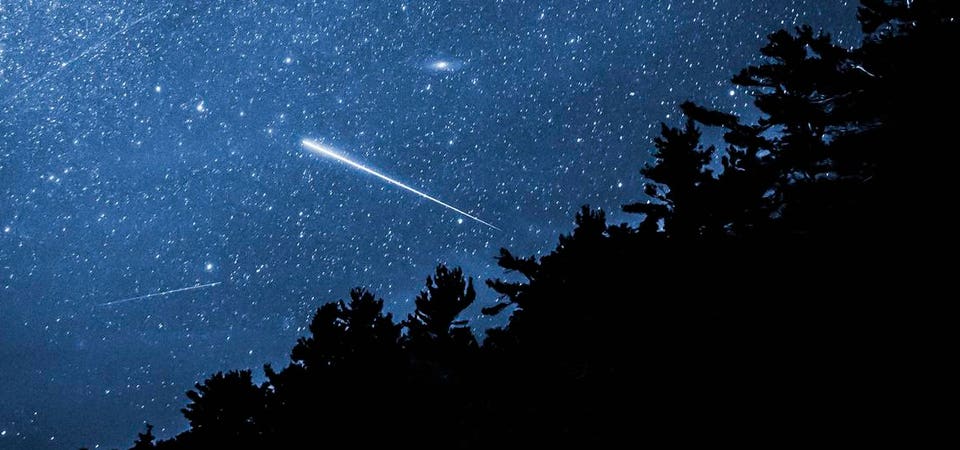‘Shooting Stars’ Expected Tonight As Earth Collides With Halley’s Comet Remnants From 3,313 Years Ago


Earth is about to bust through a stream of dust and debris left in the inner solar system by Halley’s comet in 390 BC—and that could mean an outburst of “shooting stars” for some sky-watchers.
Bright full moonlight will make it tricky for most, but some parts of the world may glimpse meteors as they watch a slight lunar eclipse that will darken the night sky.
The Eta Aquarids is an annual meteor shower caused by the famous comet that occurs from roughly mid-April through late May. It’s due to peak overnight on May 5 and 6, 2023, but Bill Cooke, the lead for the Meteoroid Environment Office at NASA’s Marshall Space Flight Center in Huntsville, Alabama, thinks that the stream from 3,313 years ago meteor rates could be over twice the usual number, according to Space.com.
MORE FROM FORBESThe Return Of Halley’s Comet Begins Soon. See Its ‘Shooting Stars’ This Week 37 Years After Last AppearanceBy Jamie Carter
However, the presence of a full “Flower Moon” during the peak will dampen real-world views by naturally brightening the night sky.
In normal years between 10 to 30 “shooting stars” per hour are predicted to be seen in the hours between midnight and dawn from seen the Northern Hemisphere, according to the American Meteor Society, while those in the Southern Hemisphere usually see up to 60. So this year it could be as many as 60 and 120 in each hemisphere.
The hemispheric differences are down to the visibility of the constellation Aquarius, which is much higher in the southern hemisphere. Eta Aquarids appears to radiate from Aquarius (specifically its star Eta Aquarii, hence the name), but they can appear anywhere in the night sky.
Typically Eta Aquarids are seen as “Earthgrazers” from the northern hemisphere—“shooting stars” that appear low on the horizon.
MORE FROM FORBESSee The ‘Flower Moon’ In Eclipse As Halley’s Comet Spits ‘Shooting Stars:’ The Night Sky This WeekBy Jamie Carter
Perhaps the best views of the Eta Aquarids will be had by those in Eastern Europe, Africa, Asia, Australia and parts of the Pacific, who will be able to see the Moon eclipsed by the Earth. During the event the sky will darken, making it theoretically easier to see “shooting stars.”
Halley’s comet orbits the Sun every 75–79 years, was last seen in 1986 and will next visit the inner solar system in 2061. This year is halfway between the sightings—and on December 9, 2023, Halley’s comet will reach its aphelion—as far as it gets from the Sun—before turning back towards it.
Wishing you clear skies and wide eyes.
